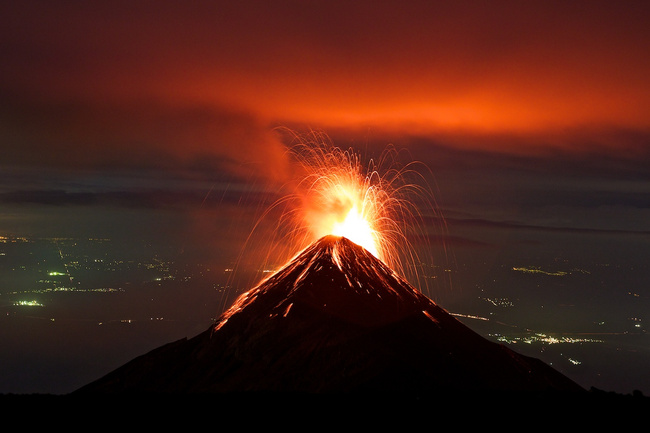
Fuego Volcano
The Fuego Volcano is one of Central America’s most active volcanoes. Set some 10 miles (16 km) outside La Antigua and adjoining the Acatenango Volcano, Fuego is a large stratovolcano that at times produces intense lava fountains, huge ash plumes, and pyroclastic flows.
More about Fuego Volcano
The Fuego Volcano has been erupting steadily since the start of the 16th century. Although the last major eruption was in 1974, the volcano continues to remain active at low levels today. Smoke can often be seen rising from the top of Fuego, but larger eruptions are still uncommon.
In September 2012, however, eruptions from Fuego forced the evacuation of 33,000 people. Ash clouds were visible in Guatemala City, some 31 miles (50 km) away, and pyroclastic flows descended down the slopes of the volcano. Fortunately, no one was hurt during the eruption, which was the largest since 1999.
It’s possible to hike sections of the 12,345-foot (3,763-m) Fuego Volcano, although doing so will depend on the volcano’s current level of activity. The hike is a difficult and technical climb that ascends along the saddle of the volcano. Hikes typically start in farmland, lead through cloud forests, and wind into high alpine meadows before reaching tree line. Stop along the steep slopes of Fuego just short of the crater—getting any closer than this is dangerous.
It's more than just having a good time or visiting beautiful places (although that's absolutely a part of it!), it's about being part of a unique experience that stays with you.



